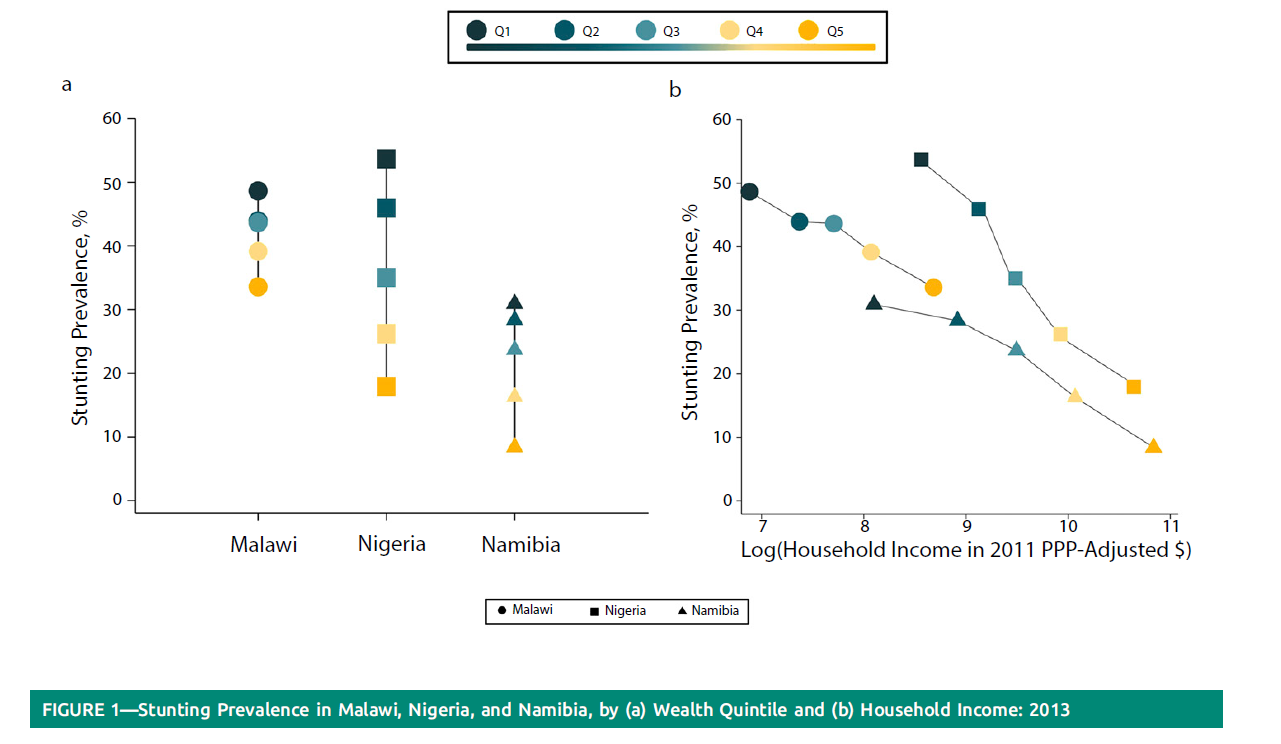News
Back to the News
March 21, 2017
Measuring Socioeconomic Inequalities With Absolute Incomes

To compare the predictive power of synthetic absolute income measures with that of asset-based wealth quintiles in low- and middle-income countries (LMICs) using child stunting as an outcome.
We pooled data from 239 nationally representative household surveys from LMICs and computed absolute incomes in US dollars based on households’ asset rank as well as data on national consumption and inequality levels. We used multivariable regression models to compare the predictive power of the created income measure with the predictive power of existing asset indicator measures.
In cross-country analysis, log absolute income predicted 54.5% of stunting variation observed, compared with 20% of variation explained by wealth quintiles. For within-survey analysis, we also found absolute income gaps to be predictive of the gaps between stunting in the wealthiest and poorest households (P < .001).
Our results suggest that absolute income levels can greatly improve the prediction of stunting levels across and within countries over time, compared with models that rely solely on relative wealth quintiles. To compare the predictive power of synthetic absolute income measures with that of asset-based wealth quintiles in low- and middle-income countries (LMICs) using child stunting as an outcome.
Read more: American Journal of Public Health
